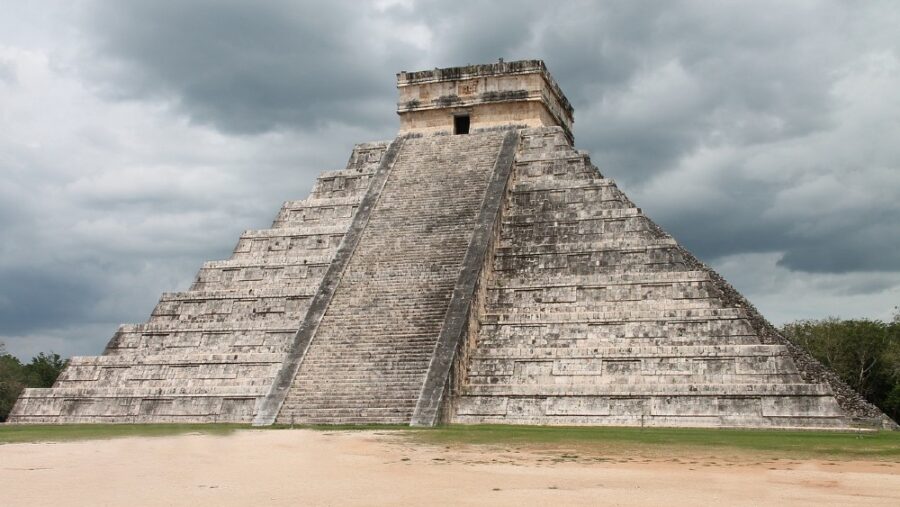Ancient Mayan Cave Reveals 1000-Year-Old Corpses

Researchers in Tulum, Mexico have discovered an ancient Mayan cave that contains at least eight human bodies that have been preserved for over 1,000 years. The human bones in the sealed Mayan cave are accompanied by a variety of animals like dogs, deer, frogs, sea turtles, and sharks, to name a few.
Researchers working with Mexico’s federal Ministry of Culture have reason to believe that the uncovered cavern was probably constructed between the years 1200 and 1550, and have confirmed that the cave was sealed by Mayans with a large boulder.
The environment inside the cave preserved the human and animal remains, allowing researchers to get a closer look at how life and burial rituals were performed at the time.
The biggest clue that indicates this is a Mayan cave is the fact that its opening was decorated with a small sea snail that was glued to the outer rock with stucco. Ancient Mayans were known to use snail imagery to signify time, transition to the afterlife, and even fertility, which makes sense in this context. Beyond the opening, the researchers involved discovered the two small burial chambers where the bodies reside.

Both burial chambers inside the Mayan cave are roughly 54 square feet, and about 16 inches high. The environment inside the cave preserved the human and animal remains, allowing researchers to get a closer look at how life and burial rituals were performed at the time.
But even though the bodies have been well-preserved, researchers are having a hard time surveying the tombs because of how small they are. A lack of lighting, as well as the high humidity and temperatures within also pose challenges to the team who wants to get the lay of the land. To complicate matters even further, the cave is also inhabited by a number of insects that thrive in this kind of environment.
As of this writing, researchers have confirmed the presence of eight adult human bodies, and at least 20 different types of animals, ranging from domesticated dogs to sharks and amphibians.
The prevailing theory is that the two burial plots within the Mayan cave were used for funeral ceremonies sometime before Europeans arrived in the Americas.
Though this seems like a sound theory, there are a number of questions that are left unanswered. Not only was one human skeleton cut in half by the boulder blocking the doorway, there is also evidence of what appears to be living human activity within the Mayan cave’s walls. After getting a closer look at some of the animal remains, researchers have postulated that their bones have been cut, and fashioned into artifacts and tools like needles and fan handles.
In addition to the carved bones, a number of ceramic fragments were found inside the Mayan cave. These fragments are indicative of Mayan burial activities from this area and time in history.
Using state-of-the-art laser scanning technology, the research team has been able to construct 3D models of the Mayan cave with a high degree of accuracy. So even though the working conditions are rough, archeologists are able to create virtual tours of the cave’s interior that will allow them to continue their research for the rest of the year.
As of this writing, researchers have confirmed the presence of eight adult human bodies, and at least 20 different types of animals, ranging from domesticated dogs to sharks and amphibians. It’s not outside the realm of possibility that even more remains will be uncovered as they continue to explore the area.
Source: INAH









